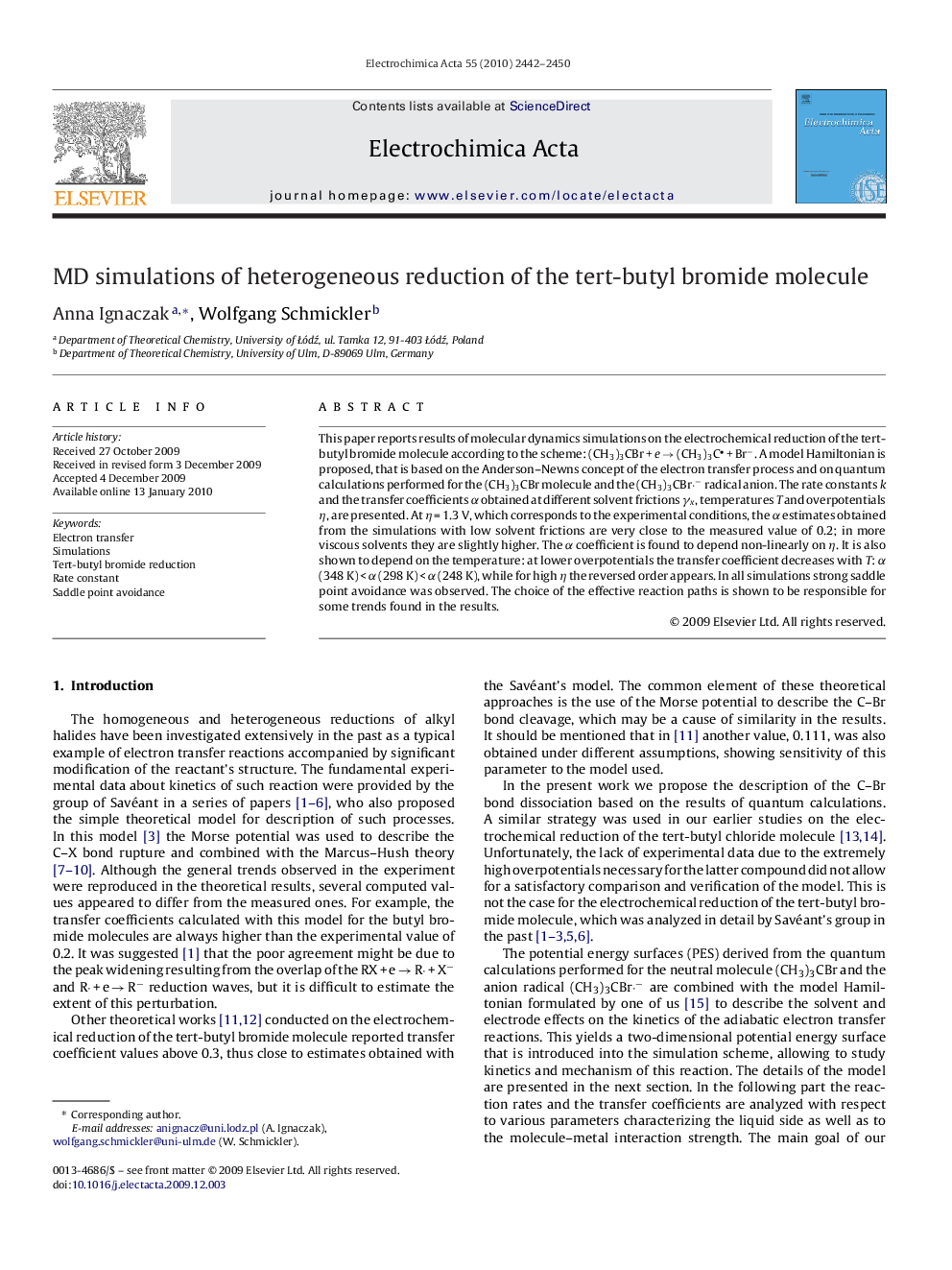| Article ID | Journal | Published Year | Pages | File Type |
|---|---|---|---|---|
| 191881 | Electrochimica Acta | 2010 | 9 Pages |
This paper reports results of molecular dynamics simulations on the electrochemical reduction of the tert-butyl bromide molecule according to the scheme: (CH3)3CBr + e → (CH3)3C + Br−. A model Hamiltonian is proposed, that is based on the Anderson–Newns concept of the electron transfer process and on quantum calculations performed for the (CH3)3CBr molecule and the (CH3)3CBr·− radical anion. The rate constants k and the transfer coefficients α obtained at different solvent frictions γx, temperatures T and overpotentials η, are presented. At η = 1.3 V, which corresponds to the experimental conditions, the α estimates obtained from the simulations with low solvent frictions are very close to the measured value of 0.2; in more viscous solvents they are slightly higher. The α coefficient is found to depend non-linearly on η. It is also shown to depend on the temperature: at lower overpotentials the transfer coefficient decreases with T: α (348 K) < α (298 K) < α (248 K), while for high η the reversed order appears. In all simulations strong saddle point avoidance was observed. The choice of the effective reaction paths is shown to be responsible for some trends found in the results.
